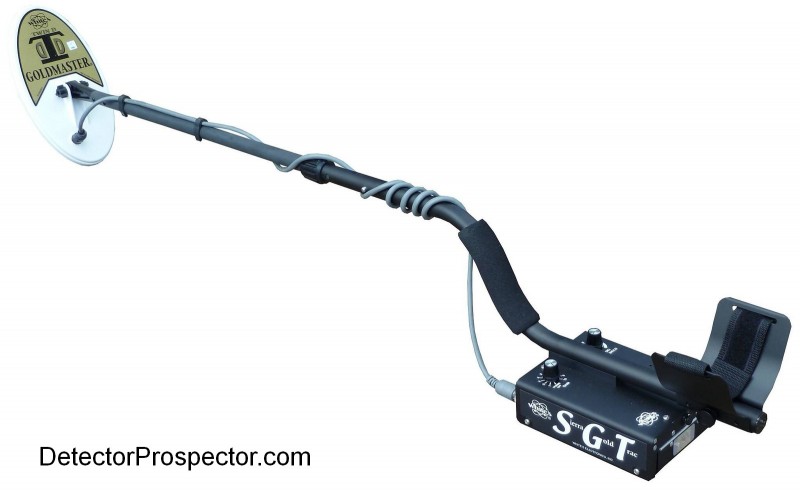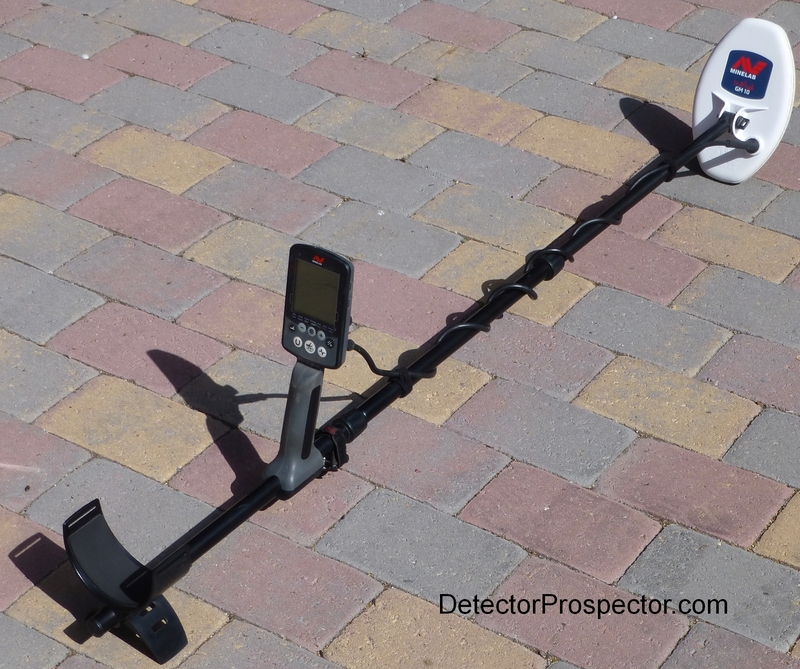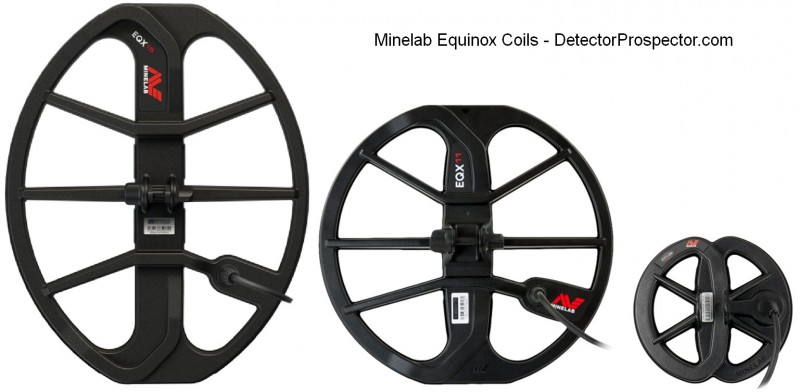-
Posts
19,761 -
Joined
Content Type
Forums
Detector Prospector Home
Detector Database
Downloads
Everything posted by Steve Herschbach
-

Need Help With Identification
Steve Herschbach replied to Joel's topic in Metal Detecting For Coins & Relics
Interesting find, wish I could be of help identifying it. -

All About Long Range Locators
Steve Herschbach replied to Steve Herschbach's topic in Metal Detector Advice & Comparisons
There are some that say the LRL is just to get you in the general area, then you switch to a normal metal detector to make the actual find. I actually have a few of those devices myself - I call them books. If I was not an honest person I could be a remarkably effective LRL salesperson, and could easily "prove" to people they work. Playing on people's greed is one of the easiest sales gigs ever. -

All About Long Range Locators
Steve Herschbach posted a topic in Metal Detector Advice & Comparisons
From Wikipedia: "A long-range locator is a class of fraudulent devices purported to be a type of metal detector, supposedly able to detect a variety of substances, including gold, drugs and explosives; most are said to operate on a principle of resonance with the material being detected." There is more at the link, but "a class of fraudulent devices" says it all as far as I am concerned. I just wanted to post this so people can find it in the search results in case they are looking. For me these devices have always failed the most basic test... the experience of hundreds of thousands of prospectors and treasure hunters around the world. Treasure hunters and gold prospectors will give anything a try that might work, no matter how crazy it seems. If it works, the use soon spreads to other prospectors. You can Google genuine successful results for regular metal detectors all day long. The internet is full of successful people using normal metal detectors to make great finds. Except for a few obvious promotionals, the success stories of people using LRL devices are glaringly absent. All excuses for why this is so flies in the face of the simple common sense answer - they don't work. In almost 50 years of metal detecting and prospecting I have met a lot of successful people, and none of them got that way by relying on a long range locator. Part two of the common sense test is if they did work, there would be at least a few users of these devices that would be fabulously rich. The few I have met are anything but... just the opposite. Again, excuses made about why these rich LRL users are invisible fly in the face of common sense. Like wanting their privacy, as if we are not a country that brags about every tiny thing we can think of! The only people getting rich are the people selling these devices. I personally refuse to purchase anything from a company selling long range locators. It says something about the management of the company that makes me prefer to do business elsewhere. If you want the absolute best information on these device anywhere visit the website below. More at Geotech -

Typical Circuit Diagram
Steve Herschbach replied to kac's topic in Metal Detector Advice & Comparisons
Obviously an LRL circuit! -

Fake Equinox 800 ?
Steve Herschbach replied to devilsrenegade's topic in Metal Detector Advice & Comparisons
What’s fake about it? The Chinese text? The Equinox comes with a multi language set of screen protectors / menu labels. Nice thing about that is you have extras if the English one wears out. You can cut the other menu language section off before applying. This person did not bother... or speaks Chinese! EQUINOX Multi-Language Screen Protector Pack Low-reflection screen protector pack. Keeps the original screen free from scratches. Available languages: English, Russian, German, Dutch, Polish, Italian, French, Spanish, Portuguese, Czech, Japanese, Korean, Simplified Chinese, Mongolian, Turkish, Arabic. Part No. 3011-0379 -

Another Fun Season In The Books!
Steve Herschbach replied to IdahoPeg's topic in Detector Prospector Forum
Sounds like you have a little piece of heaven there Peg - good for you! -
Never heard of a White's High Sierra. Are we talking about the Sierra Gold Trac SGT? That is the stripped down GMT model.
-

Parker Finds Large Gold Nuggets In Australia!
Steve Herschbach replied to mn90403's topic in Detector Prospector Forum
Every year my Alaska Gold Mining Claims For Sale page skyrockets into number one position for the website as TV viewers around the world dream of getting a gold claim in Alaska and striking it rich. Because everything you see on TV is real! -
Tracking responds to ground responses and then adjusts the ground balance setting. The amount of ground response it takes to trigger the change plus the speed and amount of the shift constitute the amount of filtering taking place. So the engineer decides first - how much ground response must the machine detect before it decides to change the ground balance setting. It has to be something obviously or there would be no tracking. The problem is the machine cannot tell the very weakest signals from a ground signal. Very tiny items or large items so deep that they appear as tiny items (it's all tiny signals, target size actually is not the issue) all appear as a ferrous type ground signal to the detector. That is why blocking some ferrous range will block some non-ferrous targets. The bottom line is that in order to track at all the machine triggers on a certain level of ground response, and that level includes weak ferrous and non-ferrous signals. That's the first level of filtering since that setting is variable from an engineering standpoint. How often do you want to sample the ground signal and make a change? Every tenth second? Every second? Every two seconds? How rapidly is the tracking occurring? On a Minelab GPX this is a variable setting and in general the faster/more aggressive the setting, the most chance of tracking out non-ferrous. So that's another level of filtering effect. Finally, how much/how far/how big a jump in setting do you want to allow in one discrete track? If the machine detects it is out of balance, should you let the setting jump a tenth of a GB setting in the proper direction, a single number, or multiple numbers. Like the rate of sample above this can make the changes slower and more mellow, or near instantaneous/aggressive. Add these all up and a machine may take two pumps over the ground to track or ten. It can adjust in a second or take a minute. In general the less aggressive the sum of the internal settings the less chance of tuning out tiny non-ferrous signals but the slower the ability of the machine to react to rapid changes in mineralization. Cal it what you want to me that's all a filtering effect, a variable effect based on multiple variable inputs. What it filters is ground responses plus weak ferrous and non-ferrous responses, trading one off against the other. Unfortunately in most machines it is all preset and ground tracking boils down to on or off. I used to never use ground tracking unless absolutely forced to do it. Now we have new machines that give us no option, like the SDC 2300. The new tracking algorithms are quite excellent but for low mineral ground eking the last bits out of a small area I would still prefer to be able to use a fixed ground balance setting to get that little extra edge. This is all far more applicable to nugget detecting than most other types of detecting, but is where an experienced nugget hunter develops an edge most other detectorists don't have. TRACKING, MOTION, AND SWEEP SPEED – PART 1 TRACKING, MOTION, AND SWEEP SPEED – PART 2
- 16 replies
-
- minelab gold monster
- minelab equinox
-
(and 1 more)
Tagged with:
-

Gold Setting For Equinox 600?
Steve Herschbach replied to lauchon03's topic in Detector Prospector Forum
From my article referenced above by phrunt are my suggested starting point for gold nugget hunting without using Gold Mode. This gets away from VCO audio for those that do not like it, adds tone capability, and very importantly low frequency options. There are places where these settings can be more effective than Gold Mode. You can also use Field 2 as long as the settings are the same - beware the preset notching of target id 1 and 2. Notching those two numbers will be fatal to your nugget detecting, which is why I suggest starting with Park 2. As far as I have been able to determine there is no difference between Park 2 and Field 2 other than the presets - performance appears to be identical with identical settings. Both the Equinox 800 and Equinox 600 have identical performance when using the same mode and settings. For Park Mode 2: Frequency: Multi Ground Balance: Auto (Ground pump method with manual tweaking) Sensitivity: 16 – 25 Recovery Speed 800: 4 - 6 (default is 6) Recovery Speed 600: 2 - 3 (default is 3) Iron Bias: 0 Accept/Reject: Everything accepted, rely on tones (alternative reject -9, -8, and -7 if too much ground feedback) The settings are a starting point to be adjusted as needed. More sensitivity obviously adds more sensitivity but can add instability. Lower recovery speeds will add sensitivity but also add to any coil knock issues being experienced. Increased iron bias may help in trashy areas and with some hot rocks but could filter out the weakest non-ferrous signals. Judicious notching can help with certain hot rocks. Ground tracking and/or lower frequencies can help deal with the worst ground. Every adjustment is a trade-off and comes with a cost - learn your detector! See the article for details. The 6" coil is both more sensitive to the smallest targets and less bump sensitive. -

Best CTX 3030 Alternative?
Steve Herschbach replied to Jbone's topic in Metal Detector Advice & Comparisons
Welcome to the forum! I’ve been detecting for coming up on 50 years now. One thing I can promise you is the detector you are using is not nearly the biggest factor in success. That’s the marketers at work. I can use any, and I mean any of the top tier coin, jewelry and relic machines made by any of the manufactures and basically do just as well with any of them. The tech is mature and it’s splitting hairs with all the over $700 models these days, and what you get for the price is dropping by the day. Nugget detecting gets more technical but for the vast majority which detector model you use is largely a popularity contest. I choose detectors based on basic factors like feature set, weight, waterproof or not, audio, etc. not whether one is magically better than all the rest at finding stuff. There are people out there doing better with a Garrett Ace 250 than some other with a much more expensive CTX 3030. How is that possible? Easy. Learn your basic skills which translate to any detector. Coil control and target recovery. Then put yourself in good locations, put in lots of hours, and dig lots of targets. That’s it, just good locations and hours. It’s not rocket science. So my advice is keep and use what you have. If you are dissatisfied with your results, it’s not the detector. Work on your detecting skills and finding better locations. Or get another detector if you want... but don’t expect that simply doing that will really make any difference. Best wishes and good luck! Edit: I hate it when people don't simply answer the question asked. So for what it is worth I sold my CTX 3030 as soon as I got my hands on an Equinox 800. -

Help Me Identify This Rock, Please.
Steve Herschbach replied to Kennyblitz's topic in Rocks, Minerals, Gems & Geology
Most likely a flint / chert nodule. See photos at the bottom of the link, good info in the text. -

Research Into Gold Nugget Hunting
Steve Herschbach replied to ResearchNugget's topic in Detector Prospector Forum
Welcome to the forum. So tell us a little more about yourself, who you are, and what made you decide to research this subject. What university are you at? What is your main line of study and how does this play into it? How many questions are in the survey? Will results be shared with forum members? Thank you! -
38 minute detailed video review of the Simplex+ 12 minute park hunt follow up
-

Making Skid Plates Your Self
Steve Herschbach replied to geof_junk's topic in Detector Prospector Forum
So far I have been happy with this modification and would do it again. It's permanent but perfect if you can devote a second coil. Better yet it requires no special tools or skills. -
So far I continue to be happy with this.
-
It doesn’t work Walt. If you follow the link to the original thread you will see it’s a Gold Monster coil. They are not compatible. Minelab has completely ignored my suggestion.
-
I lobbied for a solid elliptical early on to no result unfortunately. It seemed like a no-brainer to me since the housing already existed and it is a shame it’s never happened. ThIs coil feels great on the arm, and the solid design slides smoothly over stubble that hangs up the other coils. It would be great both for gold prospectors and U.K. style hunting of fields in stubble. 😥
-
-

Hit A Little Bit At Gold Basin Today
Steve Herschbach replied to 1515Art's topic in Detector Prospector Forum
That’s gold, no doubt about it in my mind! Congratulations!! 👍🏼 -
The fact your son made that for you makes it doubly awesome!



